The Age of Integration — 10 Examples of Integrating Carbon Data in AEC, and Why They Matter
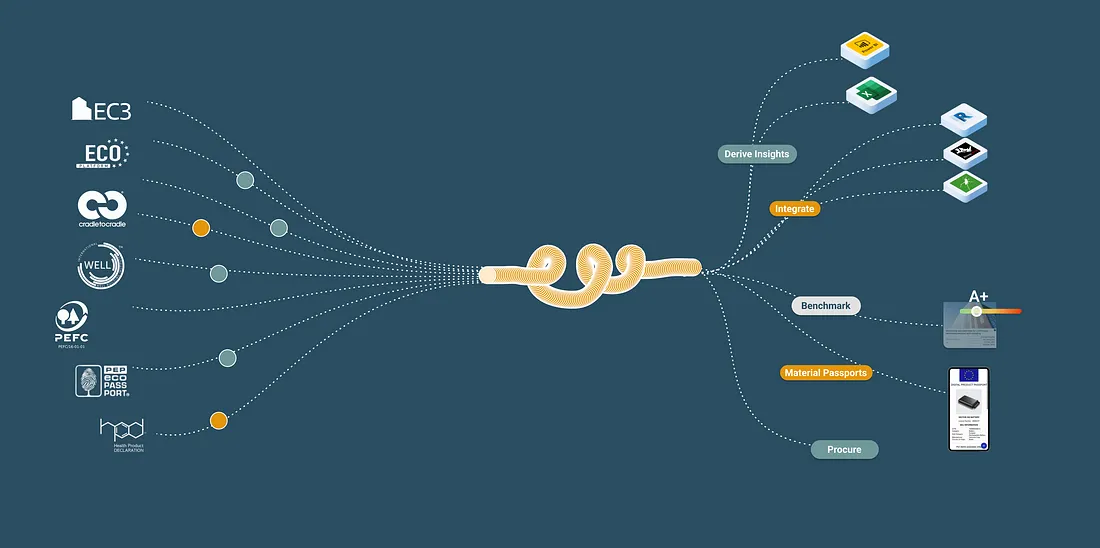
TL;DR
- Carbon is a critical KPI for the AEC industry, especially given its significant emissions.
- Embedding carbon metrics into daily decision-making processes can effectively reduce emissions.
- AEC software, from design to procurement, should include carbon data to help industry professionals make informed decisions at every project stage.
- Software providers can meet customer demands and open new revenue streams by integrating carbon management features.
1. The Importance of Carbon Metrics in AEC Software
Setting Realistic Carbon Targets for New Projects
Real estate developers and investors need to set ambitious yet achievable carbon targets. By integrating carbon data into the target-setting process, stakeholders can base their goals on real, actionable data, leading to more effective and sustainable project outcomes.
2050 Materials developed the the REAL Tool — a Realistic Emission Action Layout that helps you plan projects in a new way. Instead of the usual steps, you start by setting a carbon limit. Then, you work backwards to find what you can do to stay within this limit. We get our data from many places, and it’s not double-checked. This tool helps architects and contractors meet sustainability goals by providing clear, science-based data.
Here’s a tutorial that helps users benchmark product emissions efficiently. It includes the steps on:
▶ Selecting a product type and continent
▶ Generating quartile and median emissions benchmarks
▶ Comparing your product’s emissions against the benchmarks
If you want full access you can generate an API key from the 2050 Materials platform or get in touch with us at api@2050-materials.com and we will guide you through the next steps.
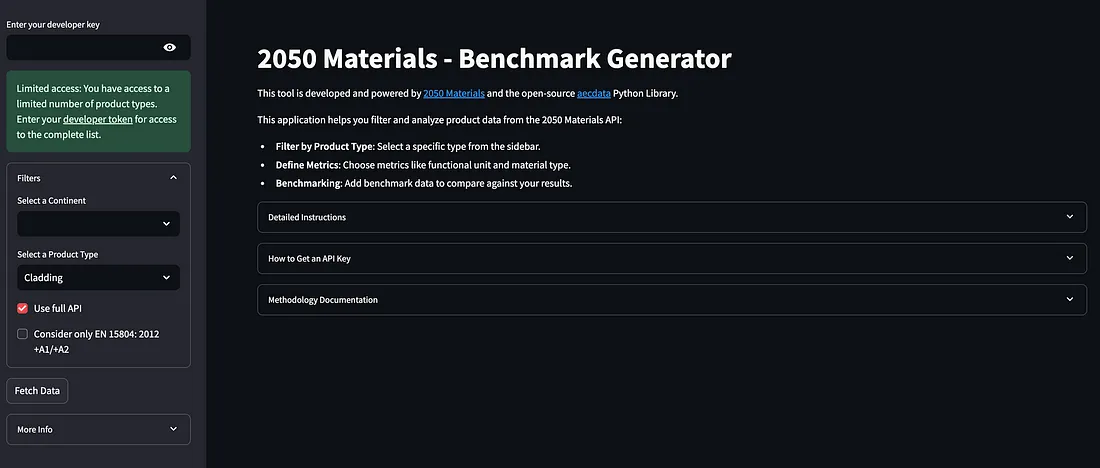
2050 Materials — Benchmark Generator
2. Early-Stage Design Decision Impact
Seeing the Carbon Impact from the Start
Architects can see the carbon impact of their design choices in the early stages of a project. Integrating carbon data into design tools allows for flexibility and informed decision-making, helping to create low-carbon buildings from the outset.
Here’s a case-study which is a collaboration between 2050 Materials and Sci-mode, in a common effort to bring more sustainability ratings in front of designers and urban planners. It highlights The extension developed by 2050 Materials for Autodesk Forma which is a pioneering tool in the analysis of “Embodied Carbon in Urban Planning.” It integrates comprehensive material emission data with advanced calculation models for early-stage planning and sustainability assessments.

2050 Materials’ API integration with Autodesk Forma
For more information please reach out to api@2050-materials.com
Here are more examples and case studies on integrating 2050 Materials’ API with other solutions in the AEC industry.
3. Informed Specification and Product Research
Understanding Carbon Footprints in Material Selection
Specifiers can understand the carbon impact of their material choices. Integrating carbon data into specification and product research workflows enables a clear comparison of the carbon footprints of different materials, facilitating more sustainable selections.
Green Badger is designed to simplify compliance and documentation towards gaining LEED certification, making it less costly for design professionals to provide such service to their clients.
Check out this case study that highlights refitting the top four floors of a building for a financial technology (FinTech) company posed unique challenges, met with innovative solutions driven by a commitment to sustainability.

Image from Green Badger’s case study
 “It’s tough to manage all those different parts… but Green Badger’s platform caught the issue very early and enabled us to achieve the credit we needed.” Erin Siller, RID, IIDA, WELL AP — Project Manager at Leapley Construction
“It’s tough to manage all those different parts… but Green Badger’s platform caught the issue very early and enabled us to achieve the credit we needed.” Erin Siller, RID, IIDA, WELL AP — Project Manager at Leapley Construction
4. Engineering Calculations Including Embodied Emissions
Incorporating Carbon Data into Engineering Calculations
Engineers can incorporate carbon data into their calculations, such as facade engineering. This ensures that the critical component of embodied emissions is considered alongside traditional engineering metrics, leading to more comprehensive and sustainable engineering solutions.
2050 Materials enables this by the use of its embodied carbon optimizer tool that allows engineers to:
1- Calculate and optimize the embodied carbon of their facade systems with ease through a simplified LCA for early design phases. With 2050 Materials’ dynamic application, you can customize and see the impact changing based on component and material selections.
2- Customize the facade systems’ carbon impact by exploring different standard assemblies and material choices.
3- Track the climate impact globally and carbon impact per product type, empowering better earlier #LCA decisions for a greener future.


5. Cost and Carbon Budget Management
Balancing Financial and Environmental Sustainability
Cost consultants and quantity surveyors can integrate carbon data into cost estimation processes. This dual approach allows them to advise clients on maintaining both financial and carbon budgets, ensuring projects are both economically and environmentally sustainable.
Early engagement of QS in project planning has proven to be effective in achieving sustainable outcomes. By integrating carbon metrics from the initial stages, QS can influence design choices to favor low-carbon materials and construction methods. This proactive approach is supported by data from 2050 Materials, enabling QS to make informed recommendations.
2050 Materials partnered with CostX in a mission to empower industry professionals with the tools needed to contribute to a sustainable built environment. This strategic partnership with RIB Software integrates 2050 Materials’ carbon rate libraries into CostX’s leading cost estimation software.
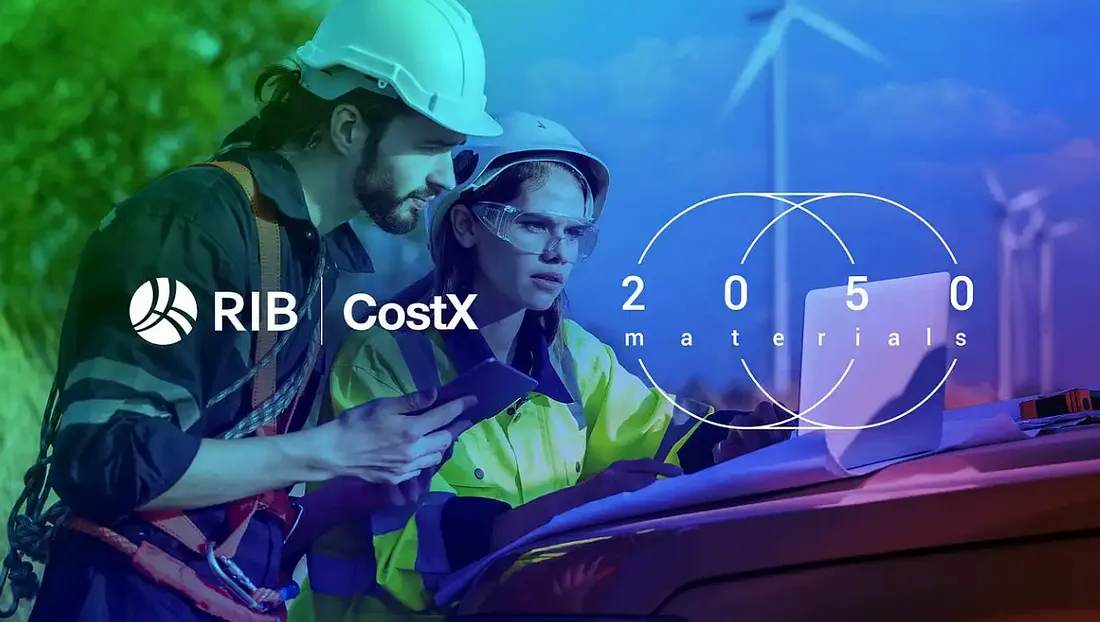
RIB Software partners with 2050 Materials for its RIB CostX software application
More on the topic in this interesting article.
6. Tracking Decisions in Procurement
Monitoring Carbon Emissions Throughout Procurement
By integrating carbon data into procurement tools and processes, decisions can be tracked to calculate as-built carbon emissions. The QFlow case study highlights how such integration can provide a clear picture of the carbon footprint throughout the procurement process, enabling better management and reduction of emissions.
QFlow takes the guesswork out of the equation and delivers data on actual construction supply chain activity for every type of project. Waste activity is also measured, helping construction companies stand out when it comes to winning bids for being accountable for their carbon footprint and environmental impact.
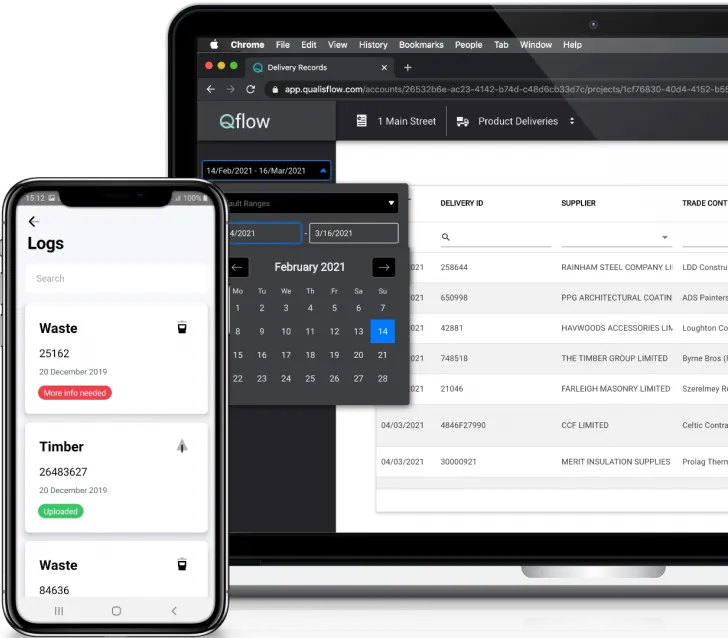
Qflow ensuring materials deliveries and waste transfer notes meet project-specific requirements
7. Digital Twins Representing Real Carbon Data
Accurate Carbon Footprint Representation with Digital Twins
Integrating carbon data within digital twins ensures they accurately represent the project’s real carbon footprint. This digital asset can then be used to prioritize resource use and reuse in the future, making it an essential tool for long-term sustainability.
Here are some case studies that highlight the integration of IES into digital twins and its impact towards a near-zero
IES combines physics-based simulation, real-time data, machine learning and AI to create a dynamic virtual replica which is scalable from a single building to an entire campus, city or portfolio. Responding and behaving like its real-world counterpart to provide detailed insights across a range of building performance metrics and empowering informed decisions on how to reduce energy, lower costs and work towards net-zero goals.
8. Educating Designers with Material Libraries
Incorporating Carbon Data in Material Libraries
Physical architectural material libraries can include carbon data to educate designers. This integration helps designers understand the carbon implications of their material choices, fostering a more sustainable design culture within the industry.
9. AEC Software Integrating Sustainability/Carbon Components
From Design to Take-Off with Integrated Carbon Metrics
AEC software can enhance its existing solutions by incorporating a sustainability and carbon component. For instance, integrating carbon data into design software allows architects and designers to see the carbon implications of their choices in real-time. As the project progresses, take-off software that includes carbon metrics can provide detailed material quantifications and their associated carbon footprints. This comprehensive integration ensures that carbon considerations are embedded throughout the project lifecycle, from initial design to final material quantification, facilitating more sustainable project outcomes.
The BHoM Lifecycle Assessment Toolkit is a good example that allows users to assess embodied carbon effectively by storing and cataloging EPD data sets, evaluating environmental impacts, and pushing results back into Revit. This tool supports detailed evaluations of various building components, ensuring comprehensive and accurate carbon assessments. By utilizing BHoM, architects and engineers can optimize their designs for sustainability, ensuring that carbon considerations are embedded throughout the project lifecycle, from initial design to final material quantification. This integrated approach promotes more sustainable project outcomes and helps achieve environmental targets in the AEC industry.

Image from Autodesk
10. Carbon Dashboards for Analytics and Benchmarking
Powerful Tools for Analytics and Benchmarking
Carbon dashboards offer powerful tools for deriving analytics and benchmarking carbon performance. Manufacturers can use these dashboards to compare their carbon emissions against industry standards and competitors, identifying areas for improvement and demonstrating their commitment to sustainability. Consultants working globally can leverage carbon dashboards to understand the carbon footprint of materials and practices in different regions. This comparison helps them advise clients on the best practices and materials available in each area, promoting a global standard for low-carbon construction.
Manufacturers and Consultants: Leveraging Carbon Dashboards
Forell Elsesser is dedicated to aiding clients in achieving their sustainability goals by making informed decisions. They utilize Environmental Product Declarations (EPDs) to assess the environmental impact of building materials. A visualization tool created by F|E uses data from the Building Transparency Embodied Carbon in Construction (EC3) database to provide insights into the carbon footprint of concrete materials across the United States. This tool allows users to navigate between views to evaluate EPD availability by US state and zip code, helping identify areas for optimization and sustainability.
By employing such carbon dashboards, manufacturers can benchmark their emissions against industry standards and competitors, identifying improvement areas. Consultants can use these tools to understand the carbon footprint of materials and practices in different regions, promoting global standards for low-carbon construction and advising clients on best practices and sustainable material choices.
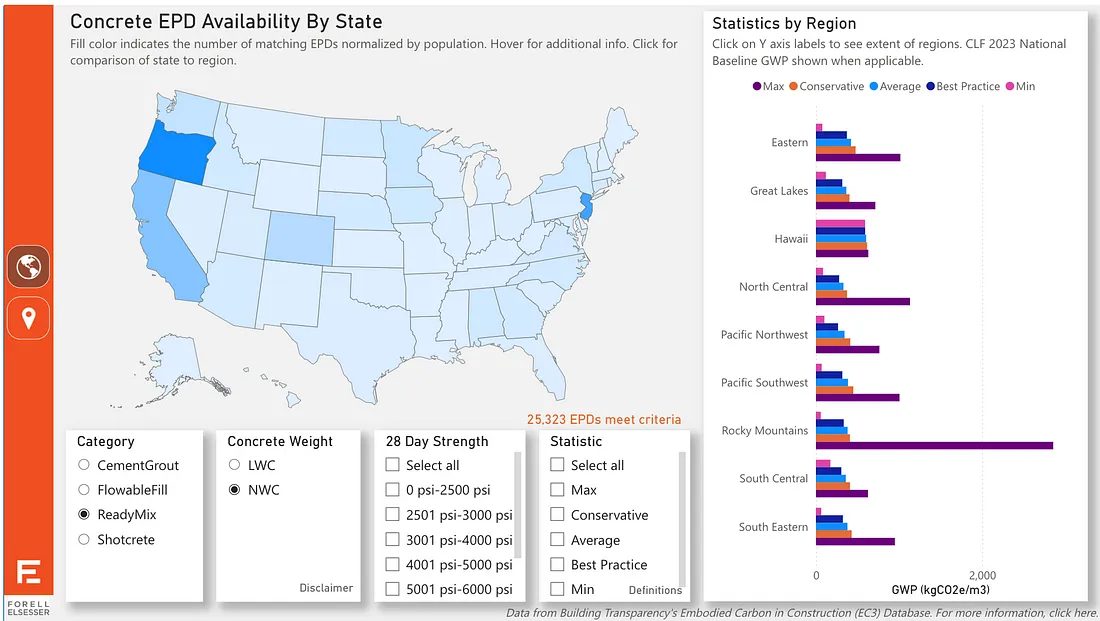
Dashboard simulation from forell
The Carbon Footprint vs. Thermal Resistance of Insulation Materials dashboard is another example that showcases the relationship between the carbon footprint and thermal resistance (R-value) of various insulation materials. This interactive tool uses data from stages A1-A3 (cradle to gate) to help users compare the environmental impact of different insulation options. By navigating the dashboard, manufacturers and consultants can identify sustainable materials, benchmark their carbon performance, and make informed decisions to improve environmental outcomes in construction projects.
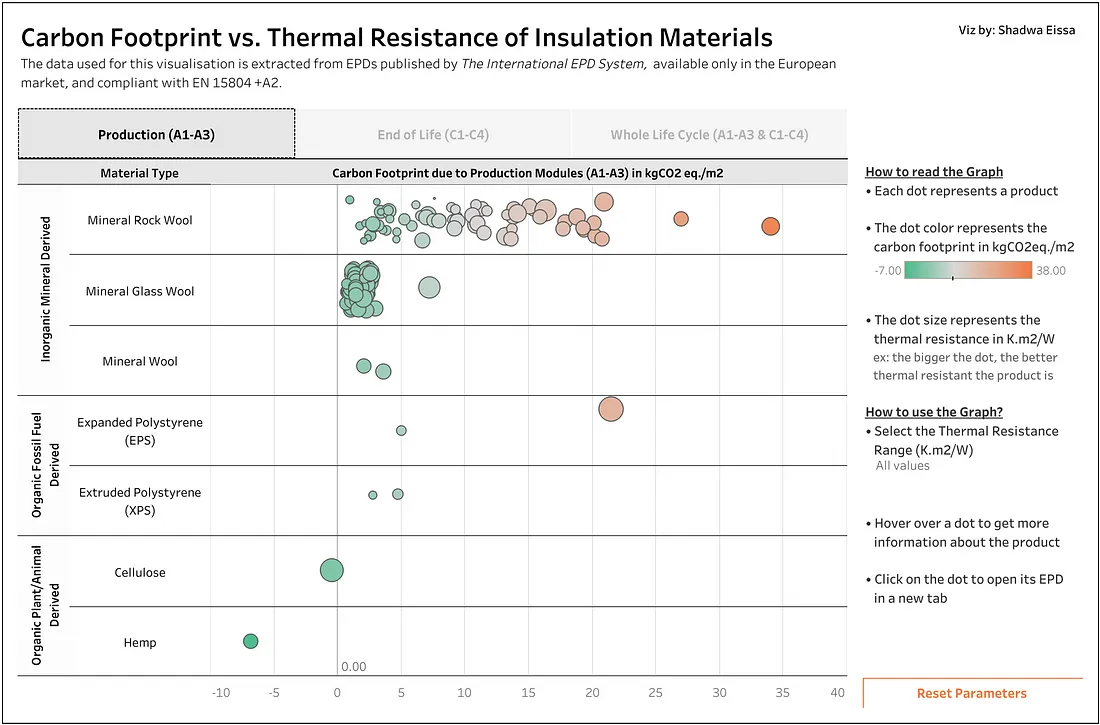
Carbon Footprint vs. Thermal Resistance of Insulation Materials Dashboard Simulation
One important tool is the Carbon Dashboard by 2050 Materials which provides an in-depth analysis of the carbon footprint associated with various construction materials. This interactive tool allows users to compare emissions data, helping identify materials with lower environmental impacts. By utilizing this dashboard, manufacturers can benchmark their carbon performance against industry standards and competitors, while consultants can gain insights to advise clients on sustainable material choices.
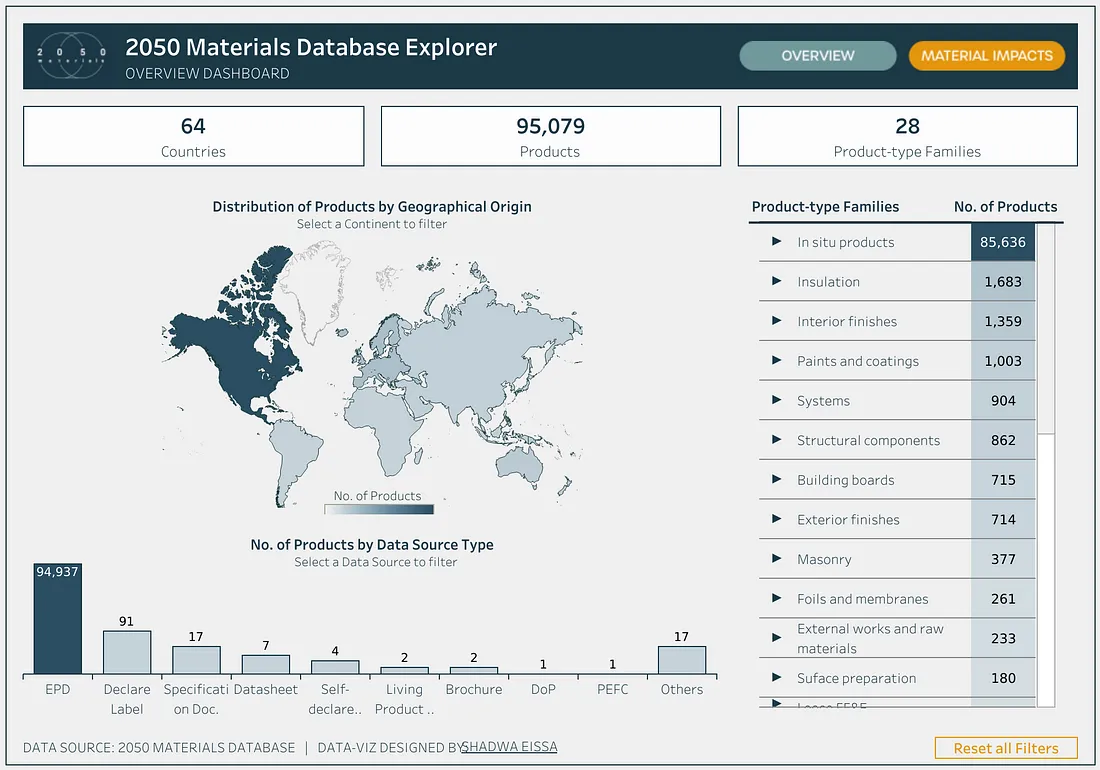
2050-Materials Database Explorer Dashboard Simulation
Conclusion
The AEC industry must integrate carbon metrics into all stages of project development to meet regulatory demands and drive sustainability. Software providers who offer these capabilities will not only support their customers’ sustainability goals but also gain a competitive edge and open new revenue streams. By embedding carbon intelligence into tools used by real estate developers, architects, engineers, and other AEC professionals, we can collectively make significant strides toward a low-carbon future.
Start Building Today
Software providers can drive new revenue streams and increase customer satisfaction by developing native carbon capabilities for AEC tools.
For more information on integrating carbon data into your software solutions, contact us today.
Sources
IES – IES Case Studies
AutoDesk – Using Revit and Dynamo to Assess Embodied Carbon
Forell – Concrete EPD Availability
Green Badger – Leapley Case Study
Related articles

Climate-Resilient Materials for the Built Environment: A Data-Centred Prime
As climate volatility intensifies, resilience metrics are fast becoming as critical as carbon data in material selection. This article outlines why adaptation is now a design imperative, how materials can be evaluated through a systems lens, and what KPIs project teams should demand. From self-healing concrete to fire-rated façades, we present a structured taxonomy of resilient materials, explain how to embed this intelligence into digital design workflows, and propose next steps for specification, benchmarking, and procurement.
Read more
The Most Interesting Low Carbon Products in Office Design
In this article and collection, we highlight 11 outstanding products that contribute to a lower carbon footprint in office design.
Read more
Top Low Carbon Building Boards: Performance, Benefits, and Use Cases
The building boards highlighted in this article and collection showcase low-carbon innovation in modern construction.
Read more